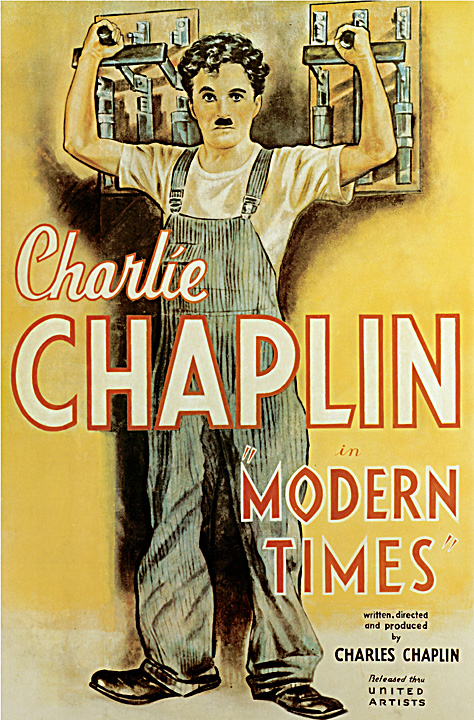 As humans, our ability to create and use technology is one of the things that make us intelligent beings. It is also a key part of our humanity. Technology and devices help us compensate for all the things we don't have or can't do.
As humans, our ability to create and use technology is one of the things that make us intelligent beings. It is also a key part of our humanity. Technology and devices help us compensate for all the things we don't have or can't do.
However, the way we have used technology has varied through the ages. Up to the 18th century, we see the craftsman's paradigm of technology, i.e. knowledge being passed from father to son. Craftsmen had a deep understanding of how technological artifacts worked, and were expert users of them. In today's terms, we would say this technology paradigm effected individual productivity.
With the advent of the Industrial Age, the technology paradigm developed into an engineering philosophy. Technology was geared towards full automation, often redefining the role of humans. In this way, technology achieved economies of scale and optimized business operations on a global level.
Now, in the 21st century, we are amidst the next technology paradigm, combining the craftsman’s view and the engineering paradigm. Today’s technology is supposed to augment human capability, on a global scale.
One of the most notable distinctions between the two paradigms lies in who is driving them. Technology has mostly been business-driven. Today, many technology innovations, and certainly the way we perceive the usefulness of technology, are people-driven. We want our business applications to be as simple and engaging as our gaming computer, we want to be mobile, and we want to be able to personalize technologies. We just want it to work for us.
Compare and contrast
To obtain a better understanding of the two paradigms, let's compare and contrast the traditional view of technology with the Be Informed view (with a focus on business operations).
| Traditional view | Be Informed view | |
| Problem-solving | Identify best practice, automate, optimize and replicate | Technology is geared towards finding the optimal approach for each single case |
| Functionality | Value the functions and features as such | Also value capabilities to flexibly meet changing user requirements, and interact with other people and systems |
| Transparency | You should be able to understand the inner workings of the system | The system should explain its actions proactively |
| Programming style | Prescriptive (describe all details) | Declarative (describe boundaries) |
| User experience | Lots of options everywhere | Just showing relevant options |
| Training | Train users to use the system | Train the system to support the users |
Table 1: Characteristics of the engineering and humanistic paradigm

In Be Informed's view, today's technology paradigm abandons the traditional "one best way" doctrine in favor of determining "best ways for each and every one of us".
How does Be Informed realize this?
The Be Informed business process platform is based on semantic technology. Semantic technologies are the next wave in web-based computing, sometimes also referred to as 3.0. Semantic technologies help give meaning to data, typically through highlighting relations(1). This is also how Be Informed works.
Be Informed is completely model-driven. This means that business analysts, strategists and policy-makers do not have to formulate requirements, which, through a number of intermediate steps, are ultimately translated into code. Instead, they can model them in Be Informed, see the results both visually and in near-natural language, simply "declare" this to be the application, and run it.
 Be Informed continuously determines which possible activities bring you closer to the goal, thus completing the transaction. This means there is no predetermined sequence of steps or workflows that restrict free interaction with customers. And when the case information changes, there is no need to start all over again, as the next set of possible activities is determined on the spot.
Be Informed continuously determines which possible activities bring you closer to the goal, thus completing the transaction. This means there is no predetermined sequence of steps or workflows that restrict free interaction with customers. And when the case information changes, there is no need to start all over again, as the next set of possible activities is determined on the spot.
There has been a long-running debate between system-centric BPM that tries to automate processes to run "straight through" and human-centric BPM that supports knowledge workers with complex tasks. The Be Informed philosophy should not be confused with being human-centric. In fact, its semantic technology allows processes to be automatically configured in real time to achieve a much higher straight-through processing rate (STP) than the traditional approach of predefining business processes.
Results
There's no point adopting a new paradigm if it doesn't bring significant benefits. Just a few percent improvement is often possible within the old way of working. We have seen remarkable improvements in bottom-line cost-savings as well as in top-line improvement.
 Bottom-line improvements, such as higher productivity, higher STP and higher first-time-right percentages regularly lead to more than 30% lower operating costs. From an IT perspective, running multiple processes through the same system while having a single model to maintain regularly, leads to TCO savings in excess of 60%. Perhaps the most striking improvement can be found in the time-to-change, where a 90% reduction is not uncommon.
Bottom-line improvements, such as higher productivity, higher STP and higher first-time-right percentages regularly lead to more than 30% lower operating costs. From an IT perspective, running multiple processes through the same system while having a single model to maintain regularly, leads to TCO savings in excess of 60%. Perhaps the most striking improvement can be found in the time-to-change, where a 90% reduction is not uncommon.
Bottom-line improvements only get you so far. Improving the top line offers even greater leverage. We have seen fivefold the conversion compared to industry standards. Moreover, because with Be Informed all products and services are going through the same process (instead of having their own processes), cross-sell and up-sell capabilities improve significantly.
Yet, we shouldn't fall into the pit of the engineering paradigm, and only think of optimizing operations. Technology needs to augment human capabilities. Most importantly, working with Be Informed provides administrative professionals with autonomy, mastery and purpose(2). Autonomy, because administrative professionals are liberated from inflexible prescriptive processes. They can focus on working with the customer or citizen. Mastery, because Be Informed allows professionals to focus on knowing their business, instead of restricting them to having to know the system. Purpose, because Be Informed allows administrative professionals to focus on the goal of administrative processes: making the right operational decisions, instead of following the flow of the system. And that's what ultimately drives business performance.
Interested in finding out more about the way we see business process technology? Please contact us at info@beinformed.com.

(1) Take, for instance, photo tagging in the consumer space. Someone can post a photo taken with a mobile phone, including a geo-tag stating that the picture was taken in Paris. Based on recognition algorithms, the system can determine that Stuart is on the picture. When you click on Stuart, you'll see other pictures of him. Semantic technology then can automatically infer that Stuart must have been in Paris, and offer targeted advertizing – all without anyone specifically having instructed the system that Stuart was in Paris.
(2) Based on "Drive" by Daniel Pink
Be Informed is an internationally operating, independent software vendor. The Be Informed business process platform transforms administrative processes. Thanks to Be Informed’s unique semantic technology, business applications become completely model-driven, allowing organizations to instantly execute on new strategies and regulations. Organizations using Be Informed often report cost savings of tens of percents. Further benefits include a much higher straight-through processing rate leading to vastly improved productivity, and a reduction in time-to-change from months to days.
More information: www.beinformed.com